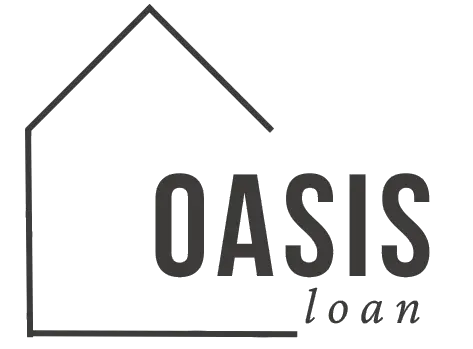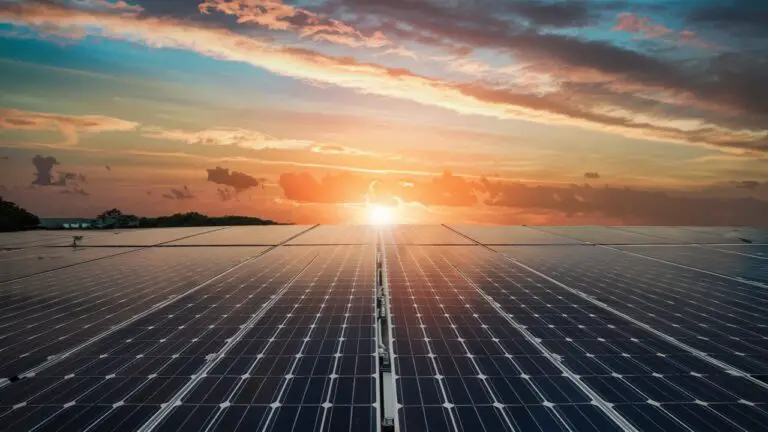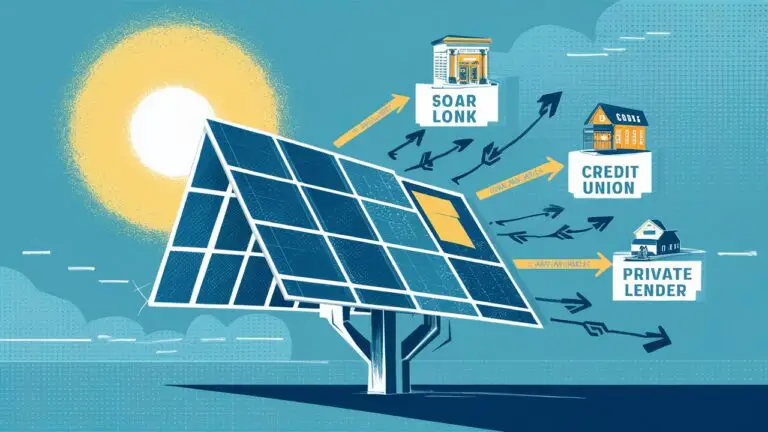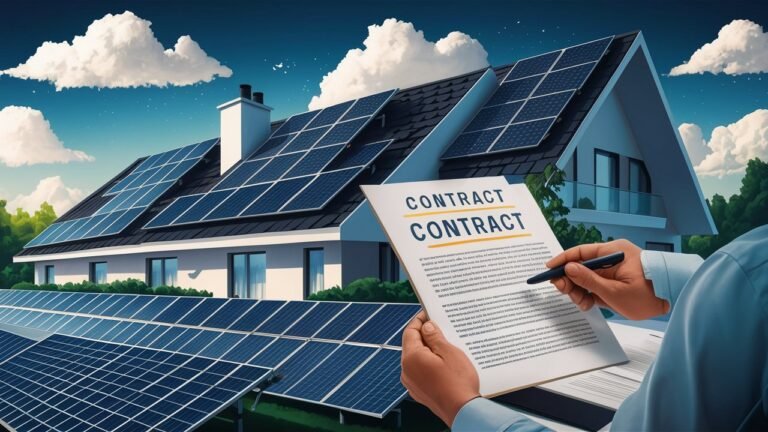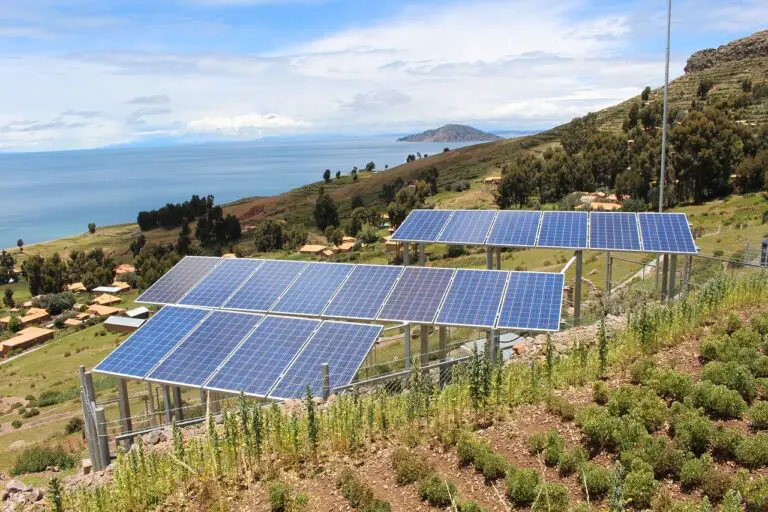Overview of the Federal Housing Administration (FHA) PowerSaver Loan Program
The Federal Housing Administration (FHA) PowerSaver Loan Program offers a unique opportunity for homeowners to finance energy-efficient home improvements. This program is designed to make green upgrades more accessible by providing favorable loan terms. In this article, we’ll delve into the details of the FHA PowerSaver Loan Program, including its benefits, application process, and how it compares to other green home improvement loans.
What is the FHA PowerSaver Loan Program?
The FHA PowerSaver Loan Program is a government-backed initiative aimed at helping homeowners fund energy-efficient home improvements. This program is part of the broader effort to promote sustainability and reduce energy consumption in residential properties.
Program Overview
The FHA PowerSaver Loan Program provides homeowners with access to loans for energy-saving upgrades. These upgrades can include installations such as solar panels, high-efficiency heating and cooling systems, and improved insulation. By offering these loans, the FHA aims to lower energy bills and enhance home comfort.
Eligibility Requirements
To qualify for an FHA PowerSaver Loan, homeowners must meet specific criteria. Generally, these include having a credit score above a certain threshold, demonstrating a steady income, and owning the home where the improvements will be made. These requirements ensure that the program benefits those who are likely to be able to repay the loan while making impactful upgrades.
Benefits of the FHA PowerSaver Loan Program
The FHA PowerSaver Loan Program provides several advantages for homeowners interested in green home improvement loans.
Low-Interest Rates
One of the significant benefits of the FHA PowerSaver Loan Program is its low-interest rates. Compared to traditional loans, these rates are often lower, making it more affordable for homeowners to finance their energy-efficient improvements.
Flexible Loan Terms
Another advantage is the flexibility in loan terms. The FHA PowerSaver Loan Program offers a range of repayment options, allowing homeowners to choose a term that fits their financial situation. This flexibility helps make the program accessible to a broader audience.
No Equity Requirements
Unlike some other types of loans, the FHA PowerSaver Loan Program does not require homeowners to have equity in their homes. This feature makes it an attractive option for those who may not have significant home equity but still want to make energy-efficient upgrades.
How to Apply for an FHA PowerSaver Loan
Applying for an FHA PowerSaver Loan involves several steps, each designed to ensure that the homeowner and the proposed improvements meet the program’s standards.
Step 1: Determine Eligibility
Before applying, homeowners should first determine their eligibility for the FHA PowerSaver Loan Program. This includes checking credit scores, income levels, and other factors.
Step 2: Choose a Contractor
Next, homeowners need to select a qualified contractor who can perform the energy-efficient improvements. The FHA provides guidelines on choosing contractors who meet the program’s standards.
Step 3: Submit an Application
Once eligibility is confirmed and a contractor is chosen, homeowners can submit their loan application. This process typically involves providing documentation about income, credit, and the proposed improvements.
Step 4: Approval and Disbursement
After the application is reviewed, and if it meets all criteria, approval is granted. The loan amount is then disbursed to cover the costs of the approved home improvements.
Comparing FHA PowerSaver Loans to Other Green Home Improvement Loans
When considering green home improvement loans, it’s essential to compare different options to find the best fit. Here, we compare FHA PowerSaver Loans with other popular green loan programs.
FHA PowerSaver Loans vs. Conventional Loans
FHA PowerSaver Loans typically offer better terms than conventional loans for energy-efficient improvements. For example, they may come with lower interest rates and more flexible repayment terms.
FHA PowerSaver Loans vs. Home Equity Loans
Unlike home equity loans, which require homeowners to have equity in their property, FHA PowerSaver Loans do not have this requirement. This difference can make the FHA PowerSaver Program more accessible to a broader range of homeowners.
FHA PowerSaver Loans vs. Energy-Efficient Mortgages (EEMs)
Energy-Efficient Mortgages (EEMs) are another green loan option. While both EEMs and FHA PowerSaver Loans aim to promote energy efficiency, EEMs are generally integrated into the mortgage itself, whereas PowerSaver Loans are standalone financing options.
Key Considerations for Homeowners
Before applying for an FHA PowerSaver Loan, homeowners should consider several key factors to ensure the program meets their needs.
Cost vs. Savings
Homeowners should weigh the cost of the loan against the potential savings on energy bills. While the FHA PowerSaver Loan Program offers favorable terms, it’s essential to ensure that the improvements will provide significant long-term savings.
Loan Terms and Conditions
Understanding the loan terms and conditions is crucial. Homeowners should review the repayment schedule, interest rates, and any potential fees associated with the loan to make an informed decision.
Program Updates
Since loan programs can change, homeowners should stay informed about any updates to the FHA PowerSaver Loan Program. This includes changes in eligibility requirements, interest rates, and other relevant factors.
Resources
For additional information on the FHA PowerSaver Loan Program and related green home improvement loans, consider exploring the following resources:
- U.S. Department of Housing and Urban Development (HUD) provides official details on the FHA PowerSaver Loan Program.
- Energy Star offers insights into energy-efficient home improvements and related financing options.
- Consumer Financial Protection Bureau (CFPB) provides resources on various types of home improvement loans and financing.
Conclusion
The FHA PowerSaver Loan Program represents a valuable option for homeowners seeking to make energy-efficient upgrades. With its low-interest rates, flexible terms, and no equity requirements, this program offers a compelling alternative to other green home improvement loans. By understanding the application process and comparing it to other options, homeowners can make informed decisions that benefit both their homes and the environment.
